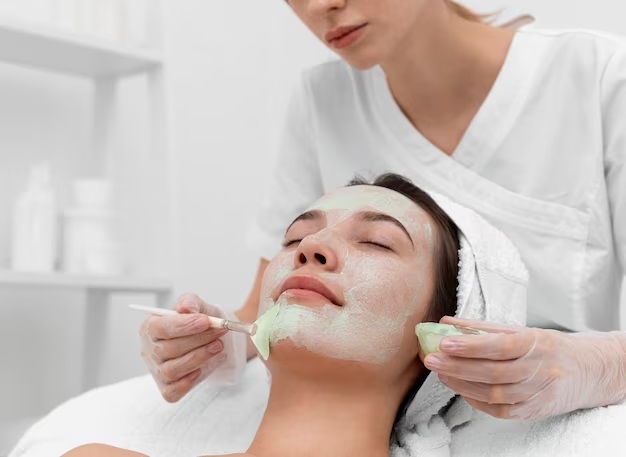The pursuit of luminous, radiant skin has long been a global fascination. In this quest, whitening treatments have emerged as powerful tools to enhance and brighten one’s complexion. These treatments address concerns related to hyperpigmentation, uneven skin tone, and dark spots. In this article, we will delve into the world of whitening treatments, exploring their significance, the various methods available, the science behind them, and the journey to achieving a radiant, even-toned complexion.
The Significance of Whitening Treatments
Whitening treatments hold significant importance in the realm of beauty and skincare for several reasons: they can help reduce the appearance of dark spots and uneven skin tone, improve overall complexion, and boost self-confidence. Shakura Review, a popular skincare brand known for its innovative whitening products, has garnered praise from countless users for its effective solutions.
Enhanced Complexion: Whitening treatments aim to reduce the appearance of pigmentation irregularities, giving the skin a brighter, more even tone.
Boosted Confidence: Achieving a more radiant complexion can boost self-confidence and help individuals feel more comfortable in their skin.
Addressing Hyperpigmentation: For individuals dealing with issues like melasma, dark spots, or post-inflammatory hyperpigmentation, whitening treatments offer targeted solutions.
Anti-Aging Benefits: Some whitening treatments, often combined with advanced skincare products and anti-aging devices, contain ingredients that promote collagen production and skin renewal, contributing to a more youthful appearance.
Methods of Whitening Treatments
Whitening treatments encompass a wide range of methods and products tailored to individual needs:
Topical Skincare Products:
Significance: Over-the-counter and prescription skincare products, such as serums, creams, and gels, contain active ingredients to reduce pigmentation and improve skin tone.
Science: Ingredients like hydroquinone, kojic acid, alpha hydroxy acids (AHAs), and vitamin C work by inhibiting melanin production, exfoliating the skin, and promoting cell turnover.
Results: Gradual improvement in skin tone and reduction in pigmentation can be observed with consistent use.
Chemical Peels:
Significance: Chemical peels involve the application of a chemical solution to exfoliate the top layer of skin, revealing a brighter, more even complexion.
Science: Peels use various acids, such as glycolic acid or salicylic acid, to remove damaged skin cells and stimulate collagen production.
Results: Skin may appear smoother and more radiant after a series of peels, with reduced pigmentation.
Microdermabrasion:
Significance: Microdermabrasion is a non-invasive procedure that uses a device to exfoliate the outermost layer of skin, improving texture and tone.
Science: Abrasive crystals or a diamond-tipped wand are used to remove dead skin cells, promoting cell turnover and collagen production.
Results: Skin may appear brighter and more even, with diminished signs of pigmentation.
Laser and IPL (Intense Pulsed Light) Treatments:
Significance: These treatments use focused light energy to target pigmented cells, breaking them down and stimulating skin rejuvenation.
Science: Laser and IPL treatments work by targeting melanin in pigmented areas while leaving surrounding skin unaffected.
Results: Gradual improvement in skin tone and pigmentation reduction is observed with multiple sessions.
In-Office Chemical Peels:
Significance: Performed by dermatologists or trained professionals, in-office chemical peels use higher concentrations of acids to treat specific pigmentation concerns.
Science: Stronger acids are applied to target deep pigmentation and uneven skin tone.
Results: Significant improvements in pigmentation and skin tone are achieved, with longer-lasting results.
The Journey to Radiant Skin
Achieving radiant, even-toned skin through whitening treatments is a journey that involves careful consideration and professional guidance:
Consultation: Start by consulting with a dermatologist or skincare specialist. They will assess your skin type, and specific concerns, and recommend the most suitable whitening treatments for your needs.
Treatment Plan: Based on the consultation, a personalized treatment plan will be created, outlining the type and frequency of treatments, as well as the use of skincare products.
Consistency: Consistency is key when it comes to whitening treatments. Follow the recommended skincare routine diligently and attend all scheduled in-office treatments.
Sun Protection: Protect your skin from UV radiation by using sunscreen daily. Sun exposure can exacerbate pigmentation issues and hinder the effectiveness of whitening treatments.
Patience: Achieving significant results may take time. Be patient and realistic in your expectations, understanding that gradual improvement is a part of the process.
Conclusion
Whitening treatments are not just about pursuing external beauty; they are about restoring confidence, addressing concerns, and achieving skin health. Whether you choose topical skin care products, chemical peels, microdermabrasion, or laser treatments, the science and art of whitening treatments offer a path to radiant, even-toned skin.
Consulting with a skincare professional is the first step in embarking on this journey. They will help you create a personalized treatment plan that aligns with your specific needs and goals. By embracing the significance of whitening treatments and the science behind them, anyone can unlock the secrets to luminous, beautiful skin and embark on a path to renewed confidence and self-assuredness.
